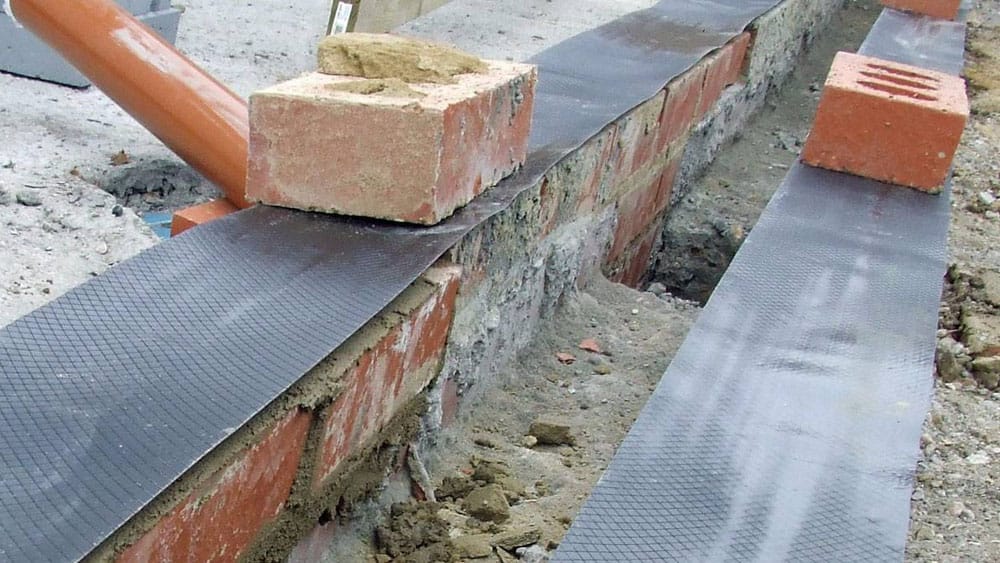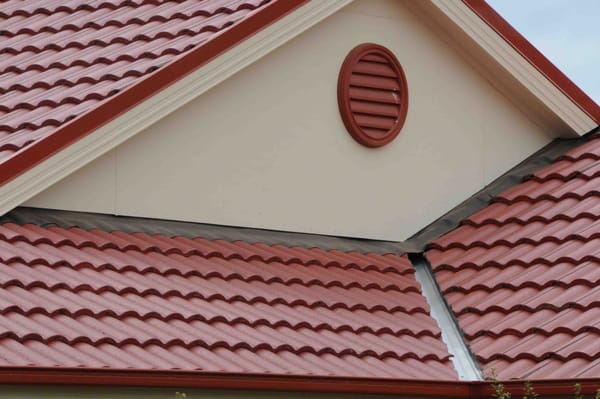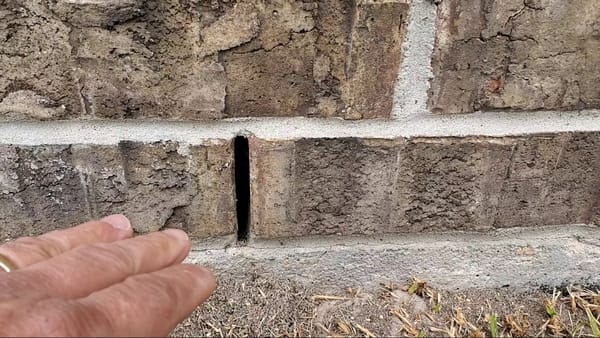Ever wondered what that black layer is that you see in the walls of buildings? Chances are it's a damp proof course or DPC. As a homeowner, DPCs are one of those things you don't give much thought to until there's a problem with damp in your house. But DPCs play an important role in keeping your home dry and preventing damage.
DPCs are typically made of materials like polyethylene, bitumen or metal that water can't pass through. They're installed in a layer of the wall that's below ground level, usually just above the foundations. The DPC creates a barrier between the parts of the wall in contact with the ground and the higher wall sections and floors to stop dampness and water damage in the home.
So while DPCs aren't the most exciting part of construction, they're well worth learning about to understand how they help protect your property. Keep reading to find out exactly what a DPC is, how it works and why it's so important for keeping homes dry and preventing damage.
What Is a DPC?
A damp proof course or DPC is a protective barrier installed in walls and floors to prevent moisture damage. Its job is to stop dampness rising up from the ground into the structure of your home.
You'll typically find a DPC layer in the foundations, about 15cm above ground level. It's made of waterproof material, like bitumen, polyethylene sheeting or mortar additives. The DPC creates an impermeable barrier, blocking water molecules and water vapour from seeping into the building materials above.
Why do you need a DPC?
Without a DPC, excess moisture can cause damage like mould growth, rotting wood and crumbling brickwork. A DPC helps prevent these issues and creates a drier, healthier home environment. It also improves the energy efficiency of homes by reducing heat loss through walls.
DPCs have been required in all new builds since 1975. If your home was constructed before then, it's a good idea to have a DPC installed, especially if you're renovating or converting a basement. You'll also want to check your DPC is intact if you're experiencing signs of damp like mould spots, peeling wallpaper or musty smells.
In summary, a DPC is a vital component in any well-built home. This unassuming strip of material keeps your property protected from the damaging effects of damp and helps ensure a comfortable place to live for years to come.
Where Are DPCs Installed in a Building?
Damp proof courses (DPCs) are installed at crucial junctions in a building to prevent moisture from rising up and causing damage.
Where Are They Located?
DPCs are typically installed in areas where water may collect or moisture levels are higher. The main places you'll find DPCs in a building include:
- Between the foundation and ground floor: To prevent groundwater from seeping into the building. Polyethylene sheeting is commonly used here.
- At the base of walls: As a barrier between walls and floor slabs to stop moisture travelling up into the walls.
- Beneath window and door openings: To prevent rainwater from entering the building around frames. Self-adhesive bitumen strips or liquid-applied DPCs are often used in these locations.
- Where external renders or claddings meet window and door frames: To seal any gaps and form a moisture barrier.
- Attics and loft conversions: Installed at the eaves level to prevent moisture ingress into the roof space.
- Balconies and walkways: Fitted where structures attach to the main building to protect from water run-off.
- Areas of structural movement or expansion joints: Flexible DPCs that can accommodate some movement are installed to maintain the moisture barrier.
By installing DPCs in these critical locations where water may penetrate the building, you can help ensure your home stays dry, prevent damage like rot and mould growth, and avoid costly repairs down the line. Keeping on top of DPC maintenance and repair is well worth the effort.
How Do DPCs Prevent Damp?
A damp proof course (DPC) prevents damp from rising up through the walls of a building by creating a barrier. How exactly does it work?
Capillary action
The material used in DPCs, typically polyethylene or bitumen, is impermeable to water. This means water molecules cannot pass through it. Without a DPC, water is drawn up into the walls through capillary action in the small spaces within the wall materials like brick or stone. The DPC cuts off this capillary action, stopping the water in its tracks.
Installation
DPCs are installed in walls, floors and the foundations to protect the whole structure. In walls, a DPC is placed just above ground level to prevent groundwater from seeping up. For floors, a DPC separates the walls from the floor to avoid damp passing between them. Sometimes a "double DPC" is used for extra protection, with one layer partway up the wall and another at the base.
Maintaining effectiveness
To keep working effectively, DPCs must remain intact and continue to form a complete barrier. Damage like tears, holes or improperly sealed joints can provide an entry point for water, compromising the DPC. If signs of damp start appearing above a DPC, it likely needs repair or replacement. DPCs that are no longer doing their job can lead to damage like mould growth, timber rot and damage to decorations or furnishings.
Regular inspections of DPCs, especially for older buildings, help ensure they continue to protect structures from damp for many years. A properly installed, high-quality DPC is a simple but essential safeguard for any building.
Conclusion
You now know what those mysterious layers or membranes are doing in the walls of buildings, protecting your home from the damage and health hazards of rising damp. While DPCs are an unglamorous and often overlooked part of construction, they play an essential role in keeping buildings structurally sound and habitable.
Next time you see a DPC being installed in a building project, you can nod sagely, confident in the knowledge of how it helps keep the big bad wolf (or rather water) from coming in.







